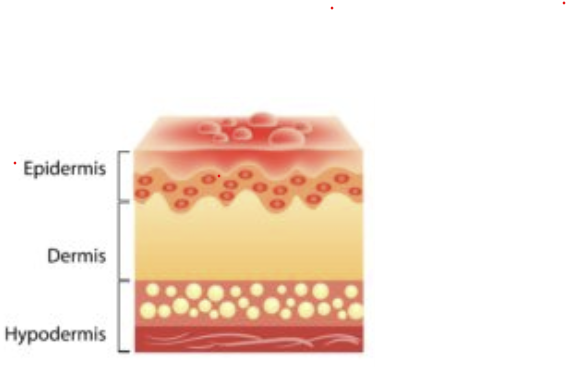Evaluating Burn Injuries at the University of Sierra Leone Teaching Hospitals Complex, Freetown
Main Article Content
Abstract
Background: As with most low- and middle-income countries (LMICs), burns are a major public health problem in Sierra Leone, yet they are poorly studied. This retrospective study of burn injuries at the Connaught Hospital unit of the University of Sierra Leone Teaching Hospitals Complex aims to bridge this gap by examining the patterns and outcomes of burn injuries over a two-year period and comparing these findings with previous studies from the same region.
Methods: A total of 146 patients were included in the study over a two-year period from January 1, 2021, to December 31, 2022.
Results: The 146 patients seen during the study period represented an average rate of 1.39 cases per week. The median age was 3.9 years (range: 2 months to 56 years) with 59.4% male involvement. Eighty percent suffered from scalds, mostly from hot water. The modal percentage of Total Body Surface Area (%TBSA) affected was 10% (range: 1–75%), and 68.1% had superficial partial thickness burns. The %TBSA of scalds was significantly smaller than that of flame burns. The most common complication was anaemia.
Conclusions: Burns continue to pose a significant challenge in Sierra Leone and the situation has not changed significantly over the past decade. There is a need to institute burn preventive measures in the country and to have dedicated functioning burns units to address this common public health problem.
Downloads
Article Details
This work is licensed under a Creative Commons Attribution 4.0 International (CC BY 4.0) license. To view a copy of this license, visit https://creativecommons.org/licenses/by/4.0/.
How to Cite
References
Bird MI, Cali JA. A million-year record of fire in sub-Saharan Africa. Nature. 1998;394(6695):767-769. doi:10.1038/29507 DOI: https://doi.org/10.1038/29507
Peck MD. Epidemiology of burns throughout the world. Part I: Distribution and risk factors. Burns. 2011;37(7):1087-1100. doi:10.1016/j.burns.2011.06.005 DOI: https://doi.org/10.1016/j.burns.2011.06.005
Innih Asuekome Kadiri, Kolawole Olubunmi Ogundipe, Kehinde Sunday Oluwadiya. A five-year prospective study of the Aetiology, Pattern of Presentation, and Management of patients with burns in Ekiti State University Teaching Hospital. Pan African Journal of Life Sciences(PAJOLS). 2022;6(1):403-411. doi:10.36108/pajols/2202/60.0160 DOI: https://doi.org/10.36108/pajols/2202/60.0160
Oladele AO, Olabanji JK. Burns in Nigeria: a Review. Ann Burns Fire Disasters. 2010;23(3):120-127.
Stokes MAR, Johnson WD. Burns in the Third World: an unmet need. Ann Burns Fire Disasters. 2017;30(4):243-246.
Forjuoh SN. Burns in low-and middle-income countries: a review of available literature on descriptive epidemiology, risk factors, treatment, and prevention. Burns. 2006;32(5):529-537. DOI: https://doi.org/10.1016/j.burns.2006.04.002
World Health Organization. A WHO plan for burn prevention and care. Published online 2008. Accessed April 9, 2024. https://apps.who.int/iris/bitstream/handle/10665/97852/?sequence=1
PB Olaitan, JO Olaitan. Burns and scalds-epidemiology and prevention in a developing country. Nigerian Journal of Medicine. 2005;14(1):9-16. DOI: https://doi.org/10.4314/njm.v14i1.37128
World Health Organization. Injuries and Violence: The Facts. World Health Organization; 2010. Accessed April 9, 2024. https://apps.who.int/iris/bitstream/handle/10665/44288/9789241599375_eng.pdf
Brusselaers N, Monstrey S, Vogelaers D, Hoste E, Blot S. Severe burn injury in Europe: a systematic review of the incidence, etiology, morbidity, and mortality. Crit Care. 2010;14(5):R188. doi:10.1186/cc9300 DOI: https://doi.org/10.1186/cc9300
Smolle C, Cambiaso-Daniel J, Forbes AA, et al. Recent trends in burn epidemiology worldwide: A systematic review. Burns. 2017;43(2):249-257. doi:10.1016/j.burns.2016.08.013 DOI: https://doi.org/10.1016/j.burns.2016.08.013
Wong EG, Groen RS, Kamara TB, et al. Burns in Sierra Leone: A population-based assessment. Burns. 2014;40(8):1748-1753. doi:10.1016/j.burns.2014.03.007 DOI: https://doi.org/10.1016/j.burns.2014.03.007
Jackson-Cole J, Pratt D, Forde M, et al. A retrospective study of burns patients at a major government referral hospital in Freetown, Sierra Leone. Journal of the American College of Surgeons. 2012;215(3):S67. doi:10.1016/j.jamcollsurg.2012.06.186 DOI: https://doi.org/10.1016/j.jamcollsurg.2012.06.186
Coker J, Abiri O, Jalloh A, Coker N, Gbla A, Kabba M. Hospital preparedness and response to the Freetown oil tanker explosion - A case study of A Tertiary Hospital in Sierra Leone. Sierra Leone Journal of Biomedical Research. 2023;14(1):8-13. doi:10.4314/sljbr.v14i1.2 DOI: https://doi.org/10.4314/sljbr.v14i1.2
Davé DR, Nagarjan N, Canner JK, Kushner AL, Stewart BT. Rethinking burns for low & middle-income countries: Differing patterns of burn epidemiology, care seeking behavior, and outcomes across four countries. Burns. 2018;44(5):1228-1234. doi:10.1016/j.burns.2018.01.015 DOI: https://doi.org/10.1016/j.burns.2018.01.015
World Bank Open Data. World Bank Open Data. Accessed April 19, 2024. https://data.worldbank.org
Forjuoh SN, Guyer B, Smith GS. Childhood burns in Ghana: epidemiological characteristics and home-based treatment. Burns. 1995;21(1):24-28. DOI: https://doi.org/10.1016/0305-4179(95)90776-V
Dongo AE, Irekpita EE, Oseghale LO, et al. A five-year review of burn injuries in Irrua. BMC Health Services Research. 2007;7:171. doi:10.1186/1472-6963-7-171 DOI: https://doi.org/10.1186/1472-6963-7-171
Atiyeh B, Masellis A, Conte F. Optimizing Burn Treatment in Developing Low-and Middle-Income Countries with Limited Health Care Resources (Part 3). Annals of Burns and Fire Disasters. 2010;23(1):13.
Datubo-Brown DD, Kejeh BM. Burn injuries in Port Harcourt, Nigeria. Burns. 1989;15(3):152-154. doi:10.1016/0305-4179(89)90170-8 DOI: https://doi.org/10.1016/0305-4179(89)90170-8
Gupta S, Mahmood U, Gurung S, et al. Burns in Nepal: A population based national assessment. Burns. 2015;41(5):1126-1132. doi:10.1016/j.burns.2014.11.012 DOI: https://doi.org/10.1016/j.burns.2014.11.012
Adamo C, Esposito G, Lissia M, Vonella M, Zagaria N, Scuderi N. Epidemiological data on burn injuries in Angola: a retrospective study of 7230 patients. Burns. 1995;21(7):536-538. doi:10.1016/0305-4179(95)00038-D DOI: https://doi.org/10.1016/0305-4179(95)00038-D
Vilasco B, Bondurand A. Burns in Abidjan, Cote D’lvoire. Burns. 1995;21(4):291-296. doi:10.1016/0305-4179(94)00001-E DOI: https://doi.org/10.1016/0305-4179(94)00001-E
Koljonen V, Tuimala J, Haglund C, et al. The Use of Blood Products in Adult Patients with Burns. Scand J Surg. 2016;105(3):178-185. doi:10.1177/1457496915622127 DOI: https://doi.org/10.1177/1457496915622127
Spiridonova TG, Zhirkova EA. Etiology and Pathogenesis of Burn Anemia. The Role of the Blood Transfusion in the Treatment of Patients with Burns. Neotložnaâ med pomoŝʹ. 2018;7(3):244-252. doi:10.23934/2223-9022-2018-7-3-244-252 DOI: https://doi.org/10.23934/2223-9022-2018-7-3-244-252
Parbhoo A, Louw QA, Grimmer-Somers K. Burn prevention programs for children in developing countries require urgent attention: A targeted literature review. Burns. 2010;36(2):164-175. doi:10.1016/j.burns.2009.06.215 DOI: https://doi.org/10.1016/j.burns.2009.06.215





